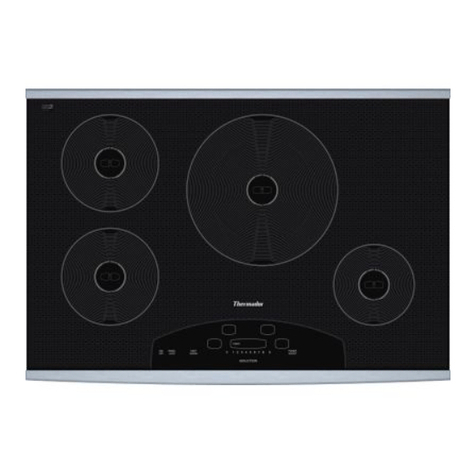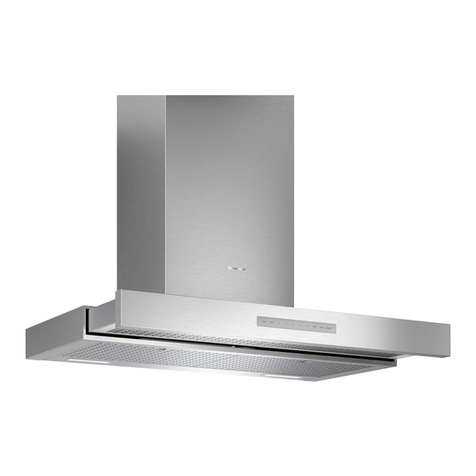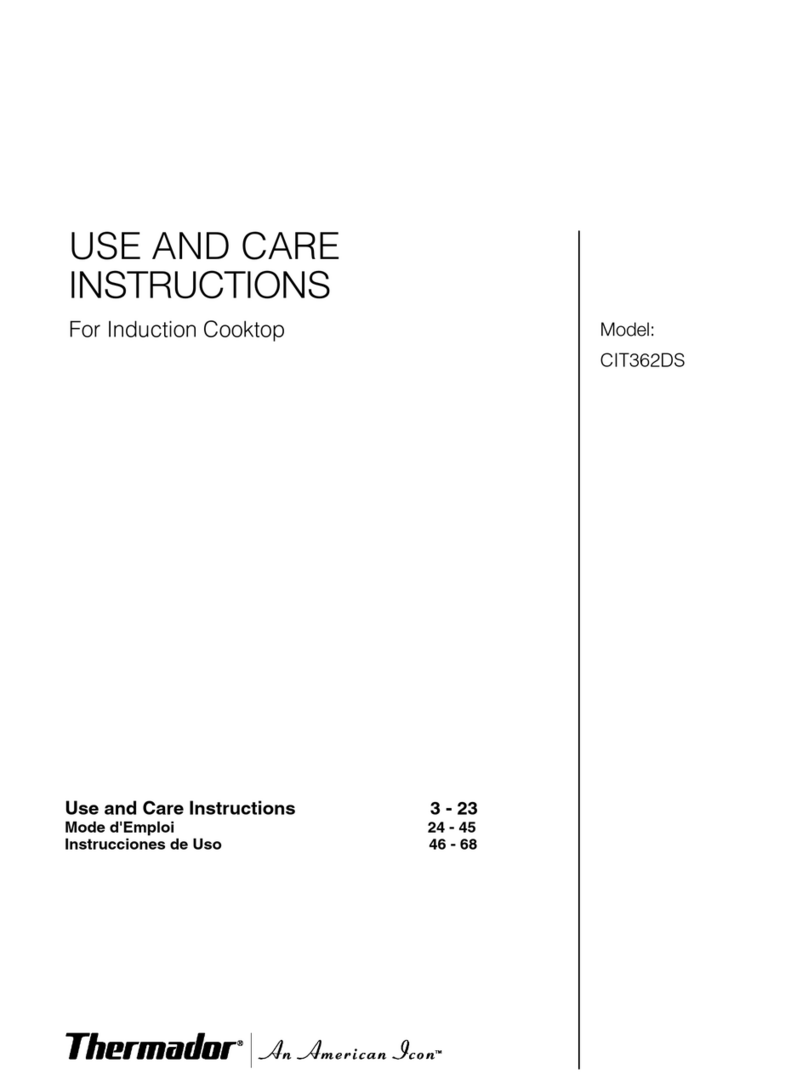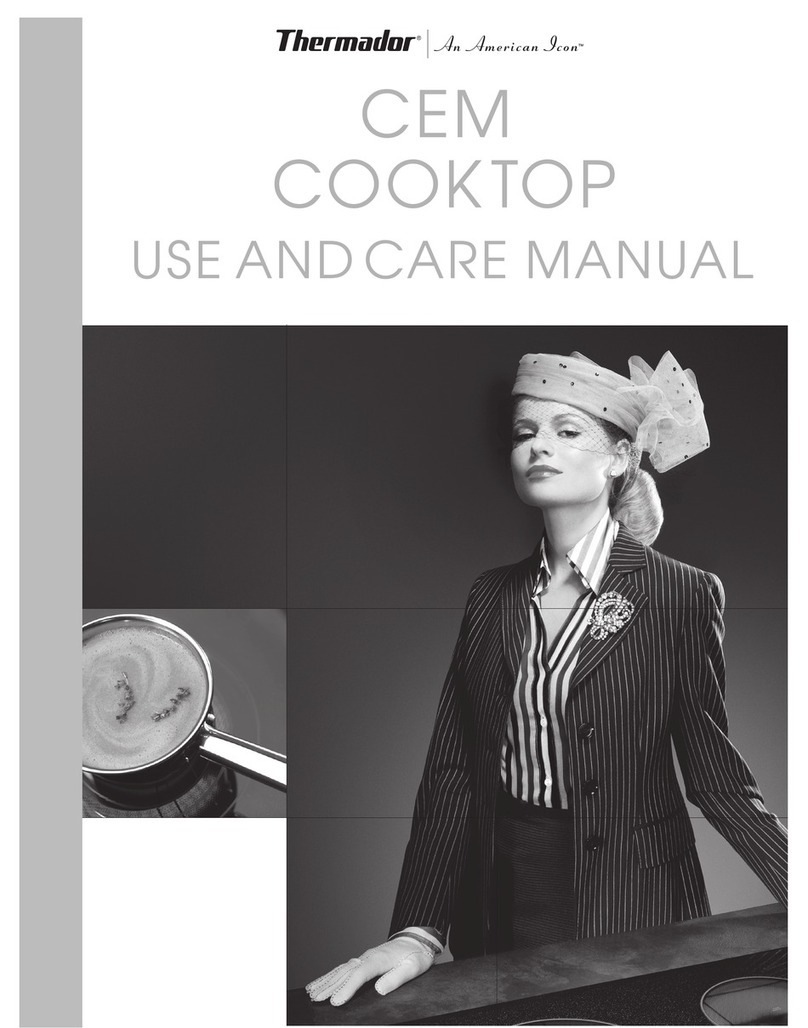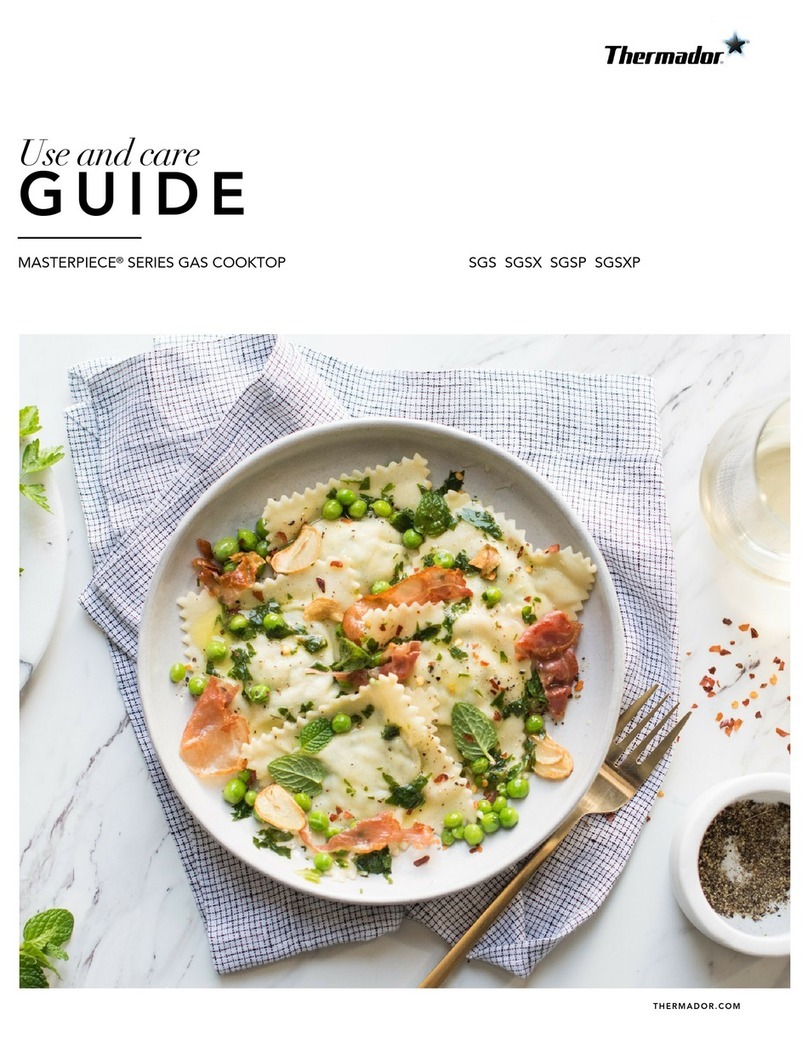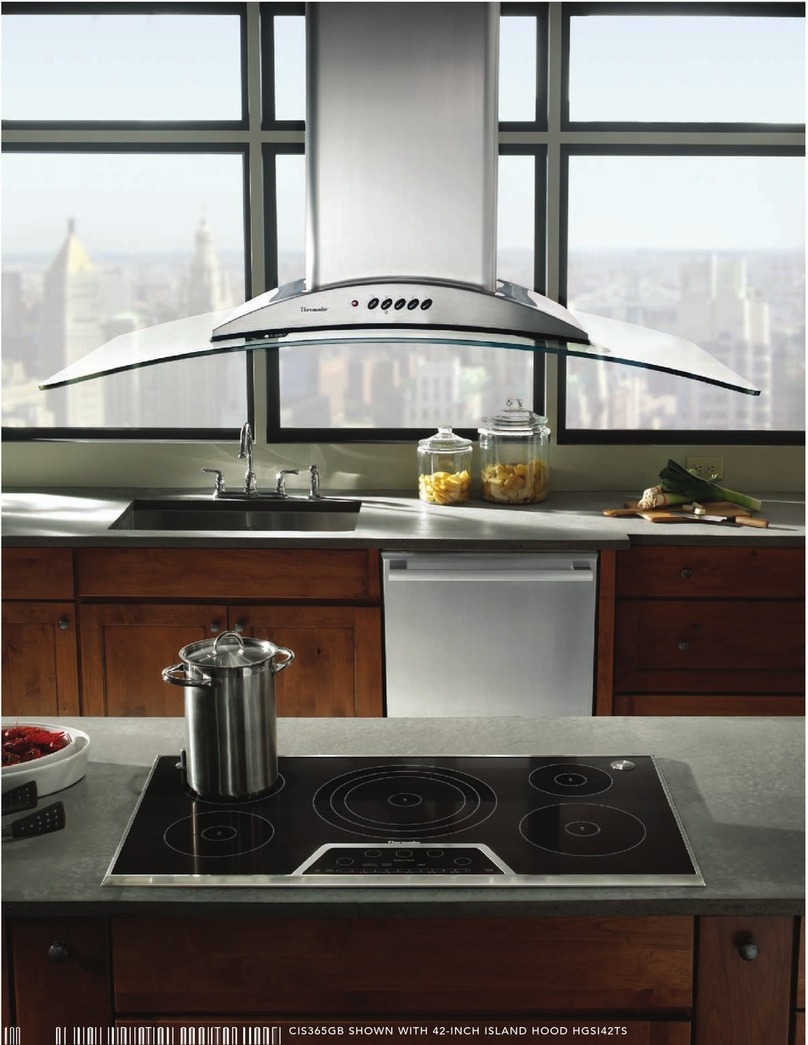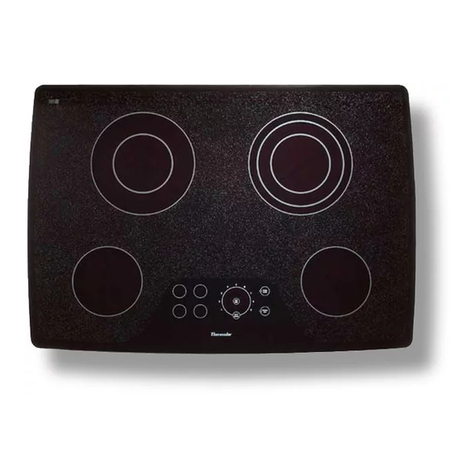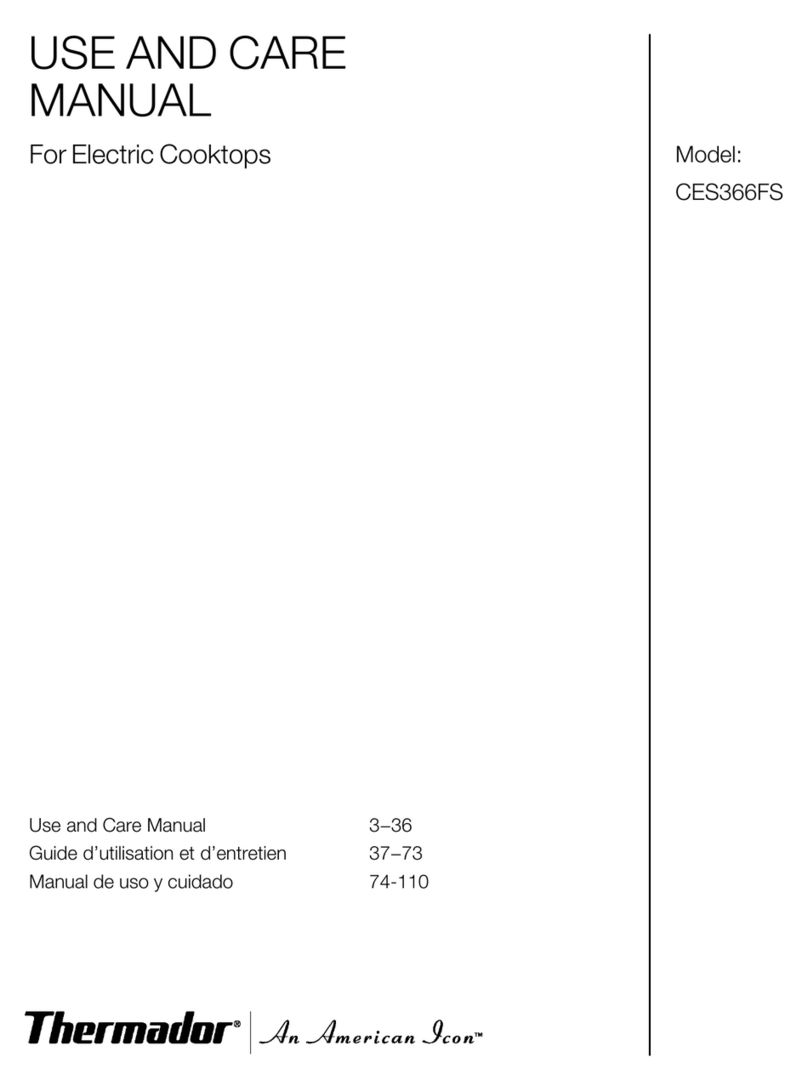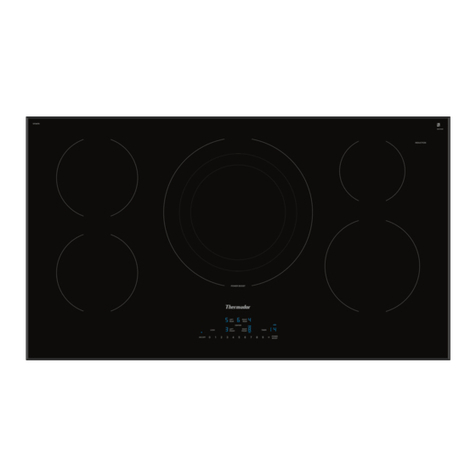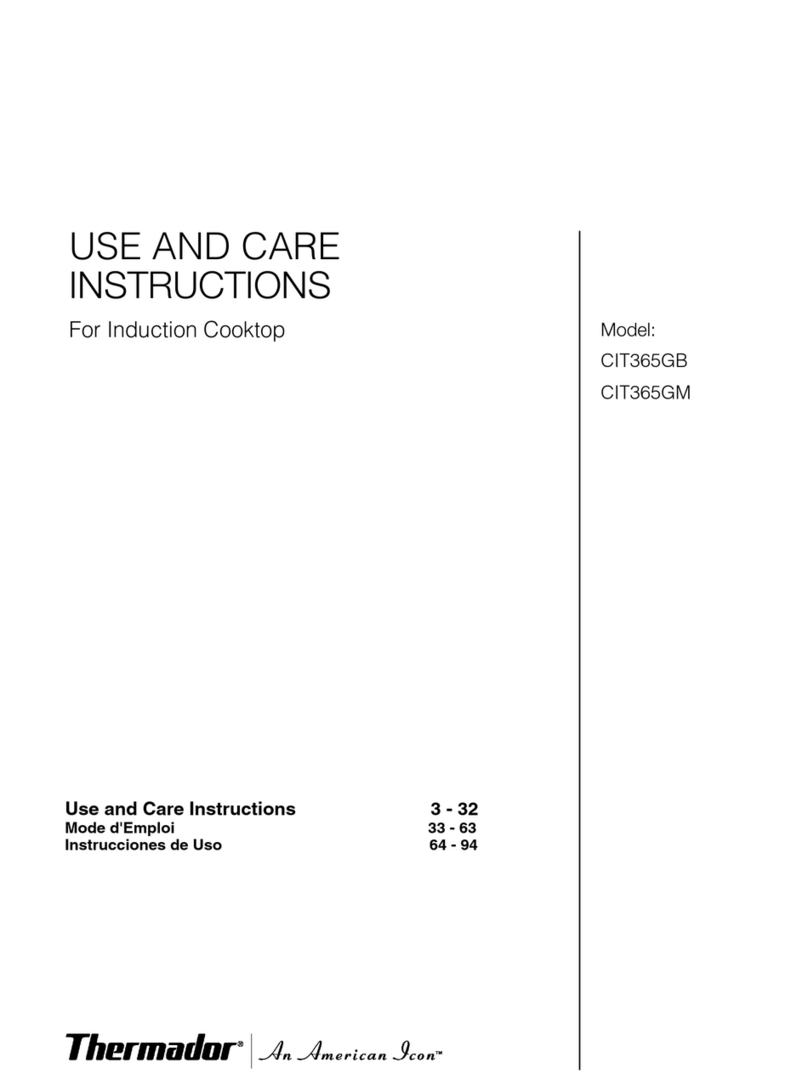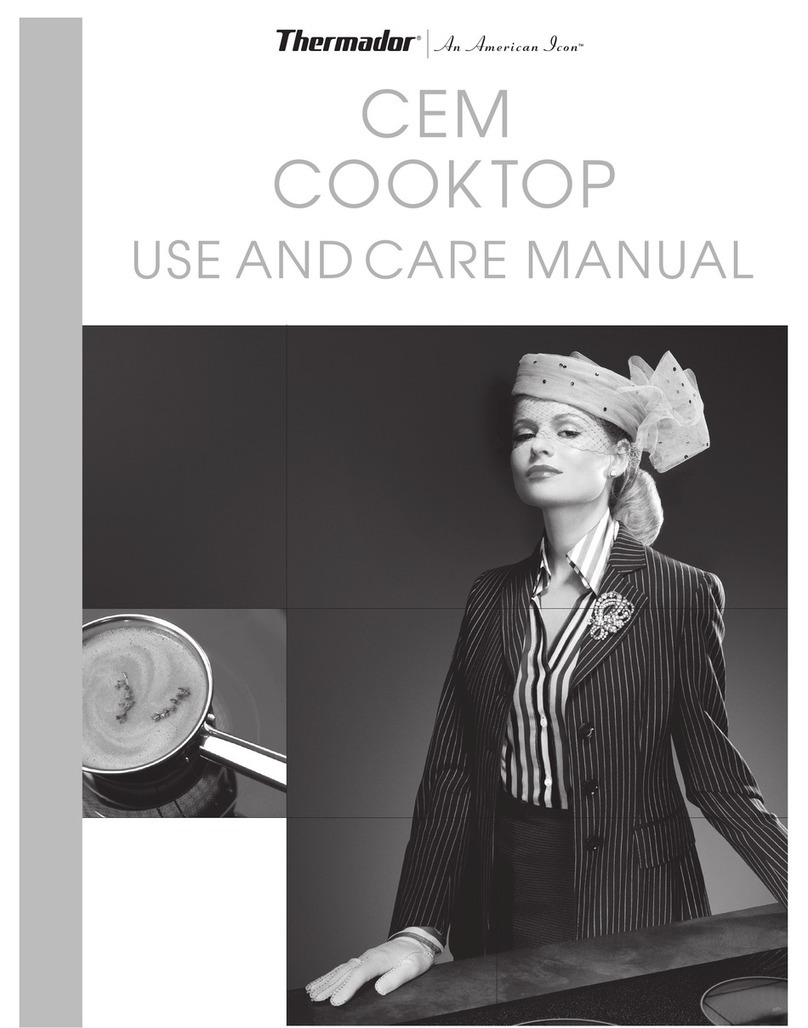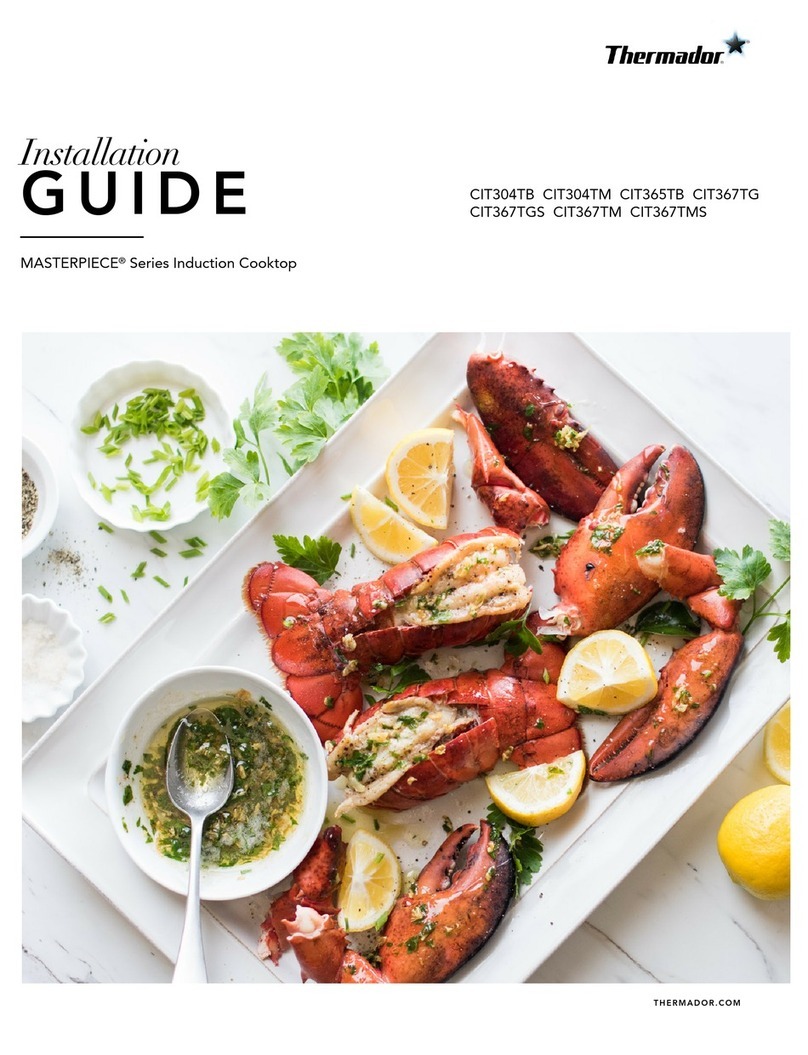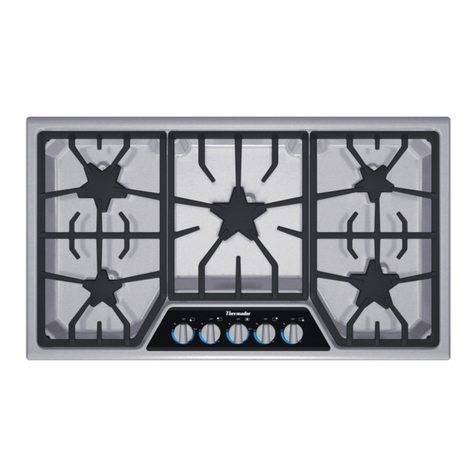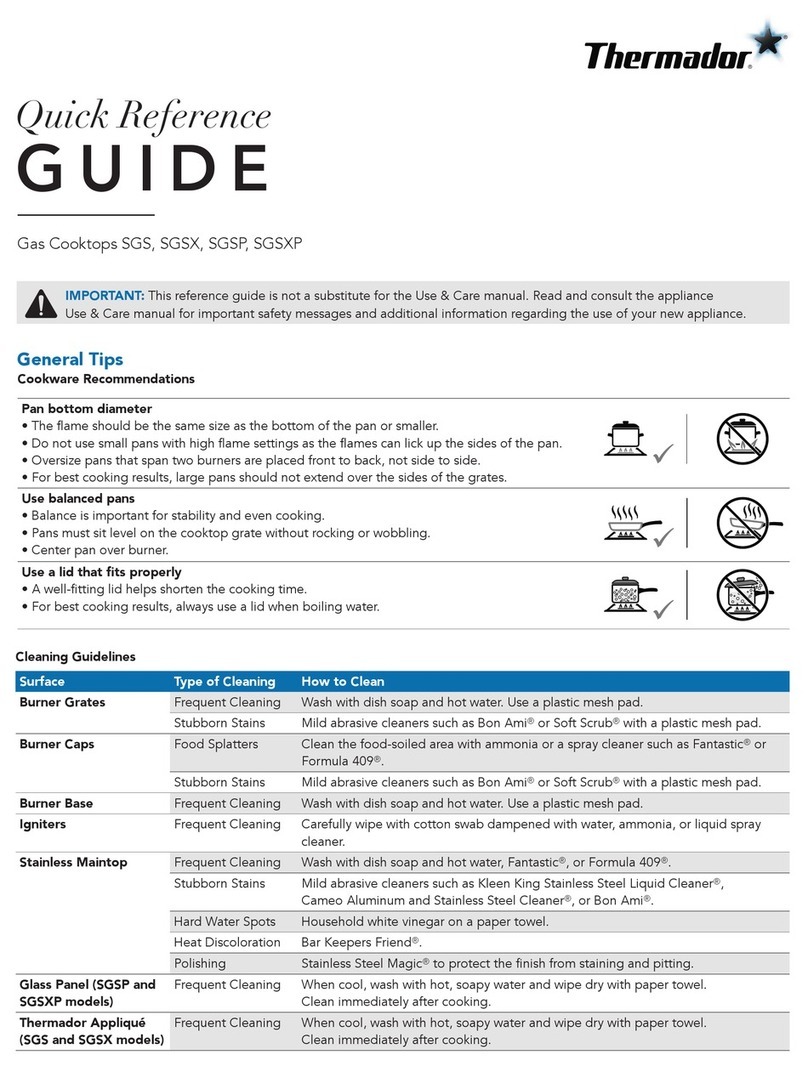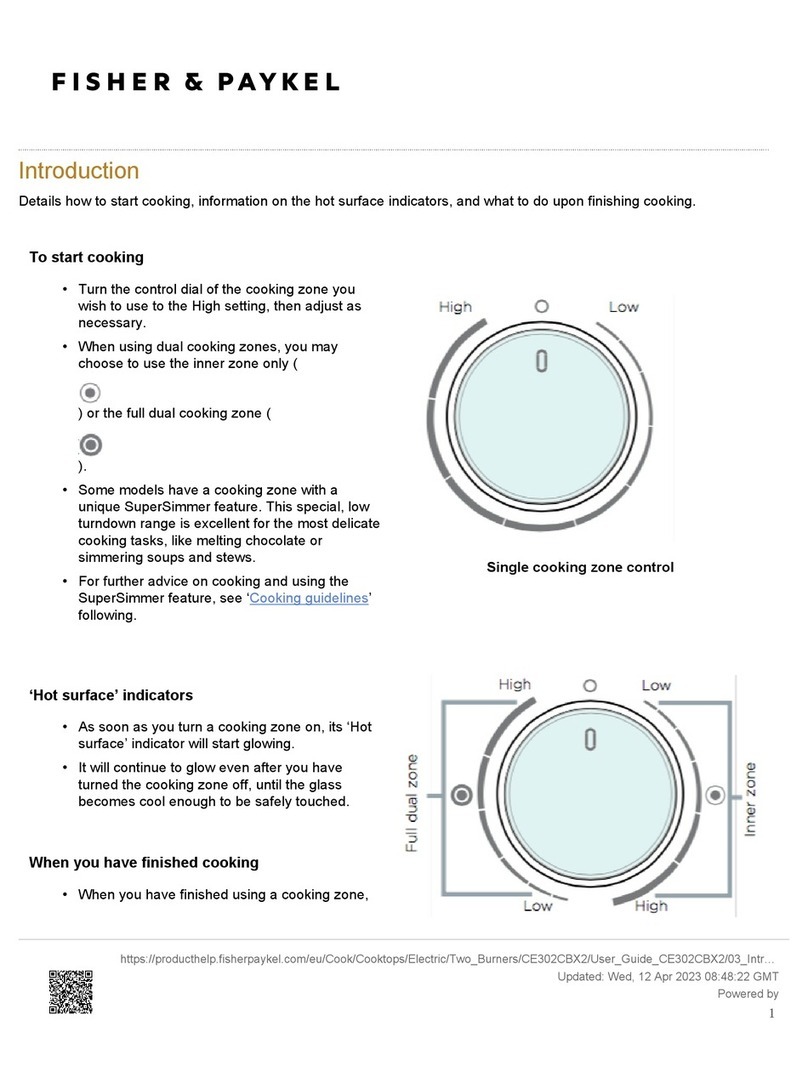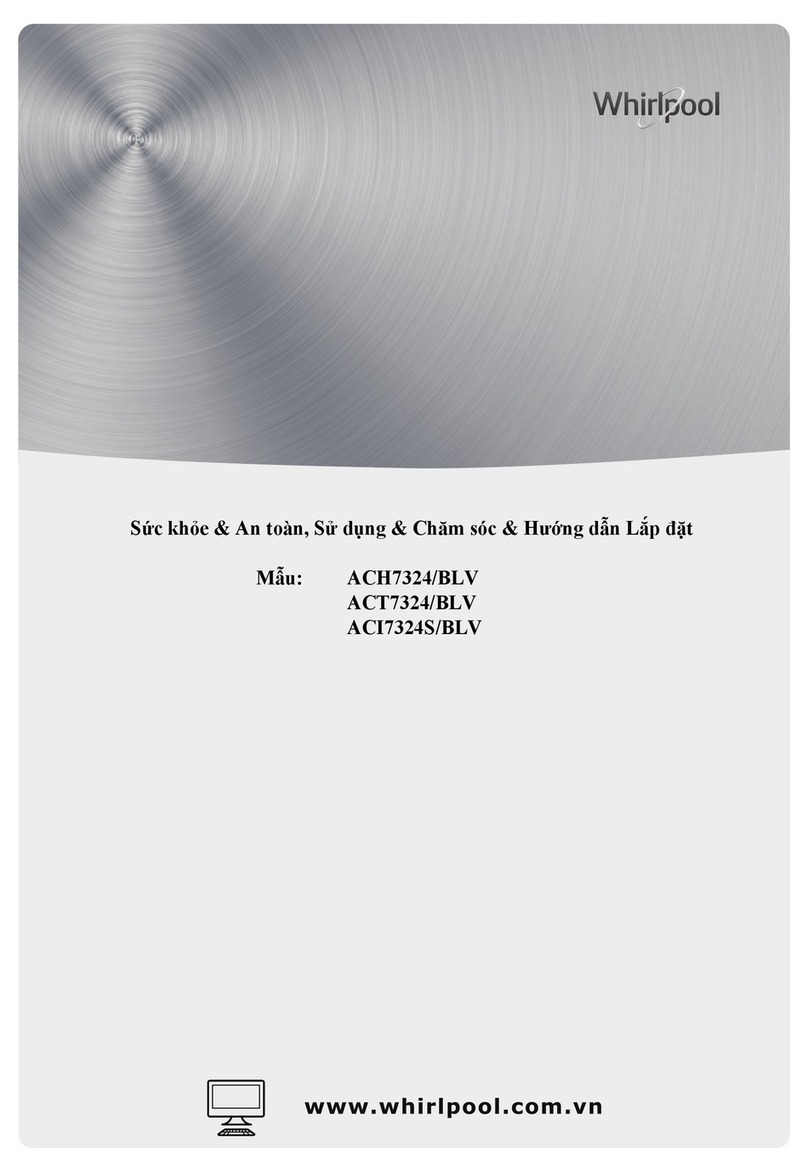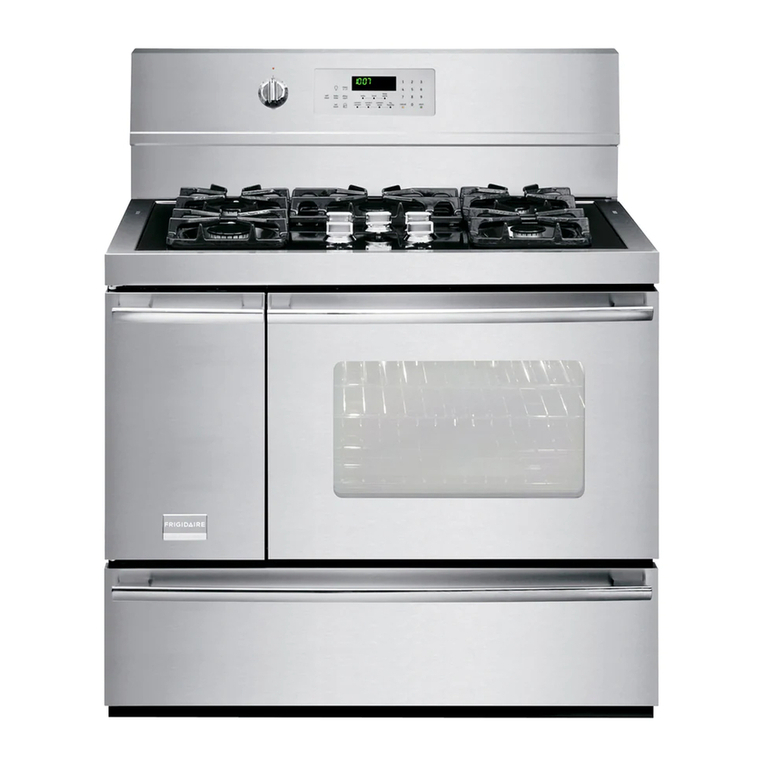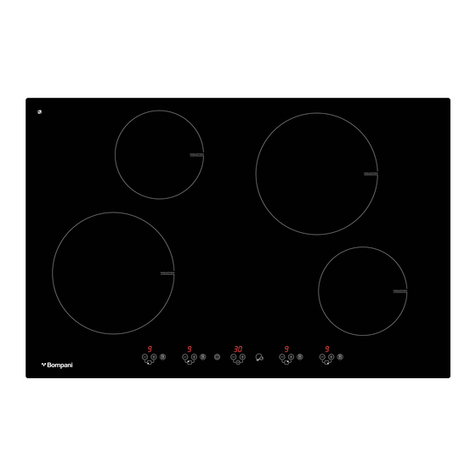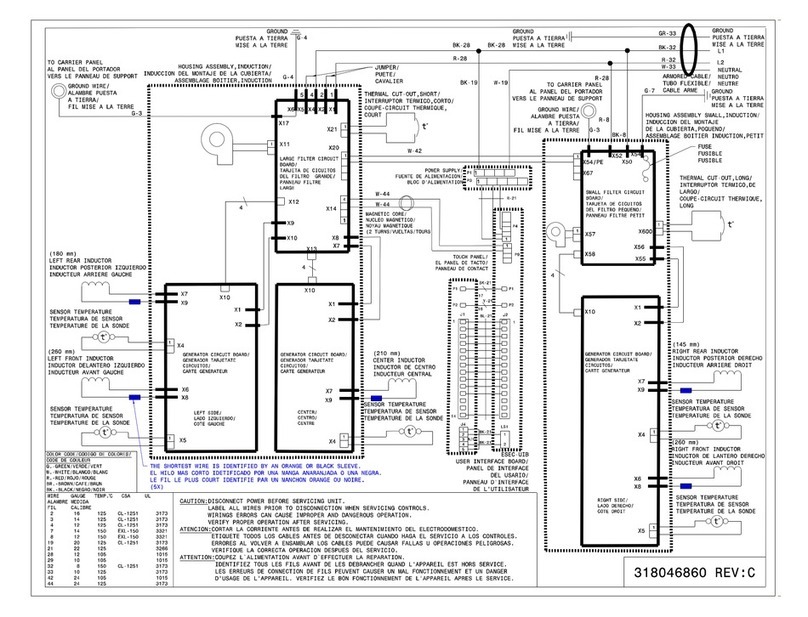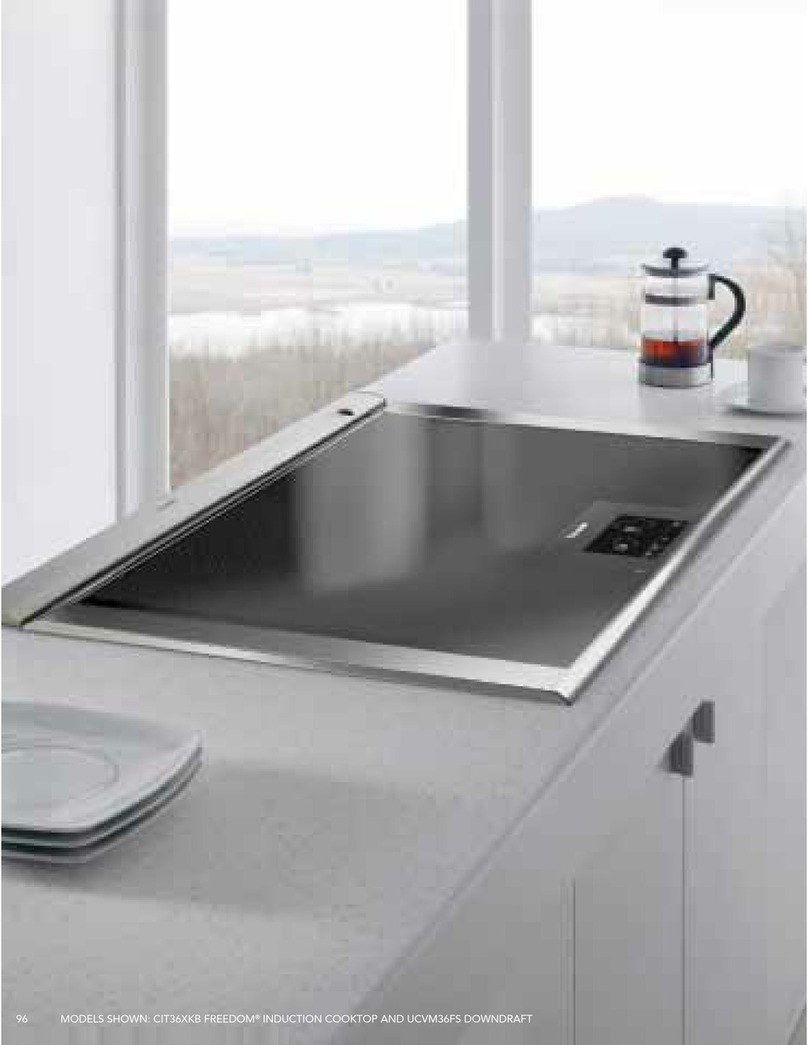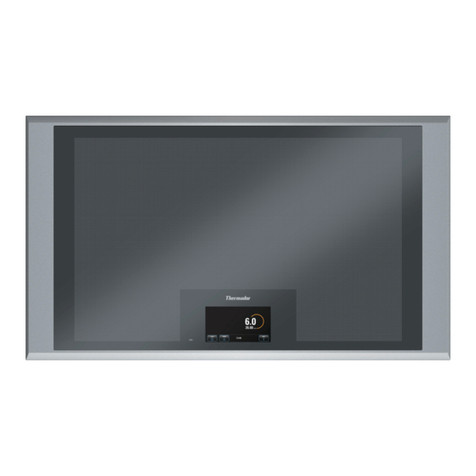
Step 2: Cabinet Preparation
NOTE:
• If a solid side cabinet wall exists on one or both
sides, you will need to notch the front corner of the
cabinettomatchthecountertopnotchandtoallow
clearance for the cooktop front (see Detail A, Figs.
3 and 4).
• If a supporting deck is used, the sides or bottom of
the cutout may be solid combustible or noncom-
bustiblematerial.Ifthebottomissolid,providea6"
by6"cutoutintheleftrearcornerofthesupporting
deck. This will provide clearance for the gas inlet
and power cord, while also allowing viewing of the
product rating label.
• Always keep appliance area clean and free from
combustible materials, gasoline and other flam-
mable vapors and liquids.
• Do not obstruct the flow of combustion and venti-
lation air to the unit.
1. To ensure professional results, the cabinet and
countertop openings should be prepared by a
qualified cabinet worker.
2. The clearances shown in Fig. 1 are required. The
same clearances apply to island installations, ex-
cept for the overhead cabinets, which must have a
space wide enough to accept the island hood.
3. The cooktop is designed to hang from the counter-
top by its side flanges. The countertop however,
must be strong enough to support this heavy
cooktop. It may be necessary to add a supporting
cleat along each side (see Fig. 2) or a 2 x 4 corner
brace (see Figs. 3 and 4 and Detail A). Another
alternative would be to construct a deck to set the
cooktop on.
4. The cooktop can be installed in various positions
with the front either flush or projecting, depending
on the countertop’s depth. (See Fig. 5, side view of
cooktop;seeFigs.3,4,6and7foralternatemount-
ing positions.)
5. The gas and electrical supply should be located in
anarea that is accessible without requiring removal
ofthecooktop.Theapplianceelectricalpowercord
andgaspipeconnectionarelocatedontheleftrear
undersideofthecooktop,asshowninFigs.5and9.
Make sure the gas regulator is horizontal when
installed in the gas supply line.
6. Themaximumdepthofoverheadcabinetsinstalled
on either side of the hood is 13".
A 36-inch minimum clearance is required between the
top of the cooktop and the bottom of an unprotected
cabinet.A30-inchminimum distanceisnecessarywhen
thebottomofthewoodormetalcabinetisprotectedby
not less than 1/4 inch of a flame retardant material
covered with not less than No. 28 MSG sheet steel,
0.015 inch (0.4 mm) thick stainless steel, 0.024 inch (0.6
mm) aluminum, or 0.020 inch (0.5 mm) thick copper.
Flame retardant materials bear the mark:
UNDERWRITERS LABORATORIES INC.
CLASSIFIED
MINERAL AND FIBER BOARDS
SURFACE BURNING CHARACTERISTICS
Followedbytheflamespreadandsmokeratings.These
designationsareshownas"FHC (FIameSpread/Smoke
Developed)." Materials with "O" flame spread ratings
are flame retardant. Local codes may allow other flame
spread ratings.
7. When there is less than a 12" horizontal clearance
betweencombustiblematerial∆andthebackedge
of the cooktop above the cooking surface, a
Thermador Low Back backguard must be installed.
(SeeStep6).Whenclearancetocombustiblemate-
rial ∆is over 12", a Thermador Island Trim may be
used. Attach the backguard before sliding the
appliance into the final installed position.
8. Establish the centerline of the cooktop’s desired
location. It should be the same as the center of the
overhead ventilation hood.
9. Cut the openings for the following installations:
• Wall installation, see Fig. 3.
• Island installation, see Fig. 4.
10. For flush installations as shown in Fig. 7, provide
clearance for the three screws located along the
underside of the cooktop leading edge by increas-
ing the cutout height by 1/16" or by notching the
cabinet at the location of the three screws.
11. For installation of a 48" cooktop above two side-
by-side Thermador Warming Drawers, Model No.
WD24, refer to Fig. 8. Completing the installation
as per Fig. 8 will result in the left and right edges of
thecooktopbeing alignedwiththeleftedge ofthe
left-side warming drawer and right edge of the
right-side warming drawer. If different alignment is
desired, the 1-7/8" horizontal distance between
warming drawer cutouts may be varied. However,
maintainatleasta1-1/8"distancetoavoidinterfer-
ence between the warming drawers. Attach a 90-
degree elbow to the gas cooktop inlet pipe and
remotely mount the pressure regulator to avoid
interference with the warming drawer. All above-
the-countertop clearances must be maintained, as
shown in Fig. 1.
∆As defined in the "National Fuel Gas Code"
(ANSI Z223.1/NFPA54-current issue).
4
